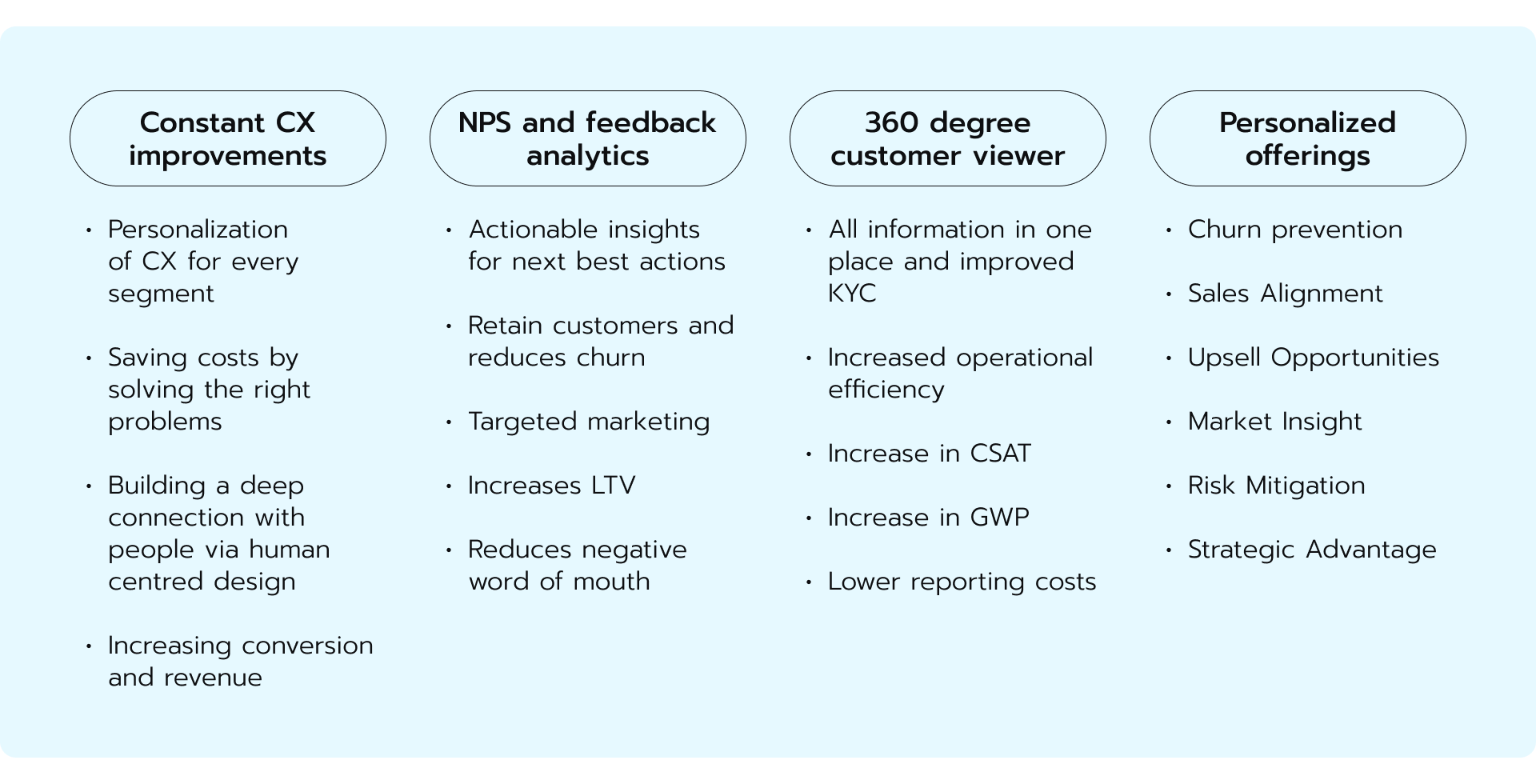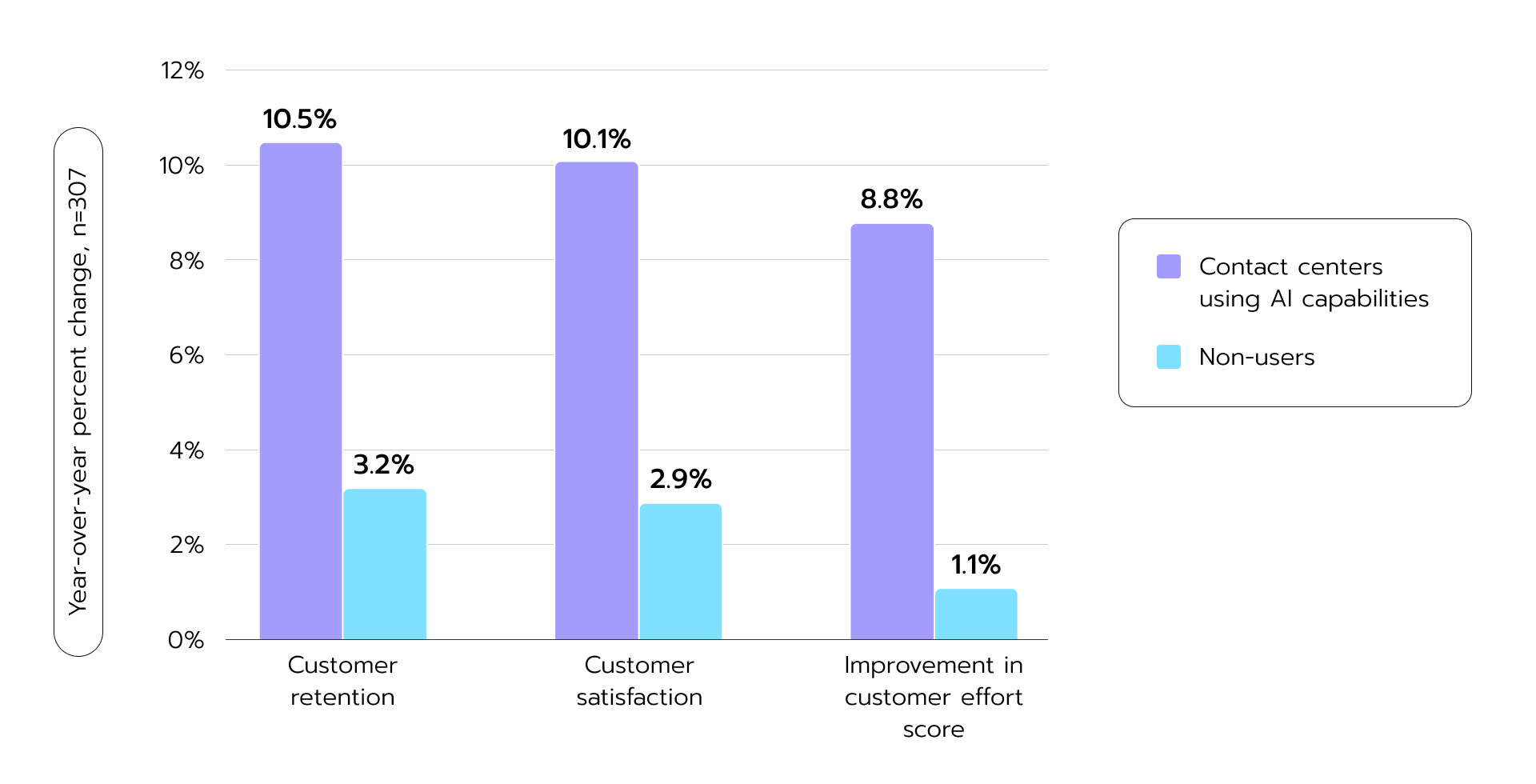How to choose the best cloud platform for AI
Explore a strategy that shows you how to choose a cloud platform for your AI goals. Use Avenga’s Cloud Companion to speed up your decision-making.

The key areas where AI is transforming, optimizing, and elevating marketing in the insurance industry.
As we’ve mentioned in previous articles, insurance is on the verge of a massive AI-driven shift. Despite the challenges stemming from the industry being heavily regulated, insurance carriers are actively experimenting with predictive models in many areas, from claim processing to underwriting, fraud detection, pricing, and, increasingly, customer service and marketing.
By using advanced analytics and Machine Learning (ML) capabilities, insurance companies can extract valuable insights from large datasets that can help separate their clientele into more granular and distinctive groups based upon behavior, needs, and preferences. And, this has huge implications for their marketing outcomes.
Having worked with both mid-sized and large insurance companies, we’ve thoroughly studied the industry’s overall marketing needs and pain points. Hence, based on the use case analysis, we’ve deduced that it makes the most sense to first focus on applying AI in these four areas:
 Figure 1. Four insurance areas where AI can have a massive impact.
Figure 1. Four insurance areas where AI can have a massive impact.
AI algorithms help organizations aggregate and integrate data from various sources so as to create a complete and accurate view of each customer. These sources typically include claims management systems, policy administration systems, CRMs (Customer Relationship Management), social media, etc. Within architectural considerations, Graph Neural Networks (GNNs) often emerge as an optimal choice for capturing intricate relationships within data sources.
GNNs create graphs in which data sources are the nodes and the edges are the relationships between them. For example, they can visualize a link between a CRM and a policy administration system to see if they share some customer data.
After the graph has been created, a message-passing algorithm is applied to move information between nodes, and after each iteration, the nodes update their state based on the messages from neighboring nodes. Post-graph creation, a message-passing algorithm is applied to transfer information between nodes. Iteratively, the vertices update themselves based on messages from adjacent nodes. After repeated interactions, the GNN converges, resulting in each node representing a single view of the customer. Once the system is ready, various marketing tasks could be performed with it, such as segmentation, personalized recommendations, etc.
Within this element, Named Entity Recognition, Part of Speech, Conference resolution, and Text models can be applied to both identify and correct errors, misspellings, and different inconsistencies within client data, as well as to extract information from unstructured sources such as reviews and social media posts in order to enrich existing datasets. Then, classification, regression, clustering, and anomaly detection algorithms can be used to detect incorrect policy numbers and claim information, and predict various customer risk factors.
Finally, GNN architectures can clean data by exploiting the relationships between clients (i.e., to identify and eliminate duplicate information), as well as propagate data across the customer graph, such as demographics. This means, for instance, that if the GNN sees a client’s age, it could determine the probable age of their family members, which could then be used to create more personalized campaigns.
GNNs can orchestrate client segmentation based on social circles, claims history, and policy purchase patterns. This analytical framework provides insights into purchasing decisions within groups of friends and families. But, they’re just one option.
A range of traditional ML models, including K-means, SVMs (Support Vector Machine), Decision Trees, Division, and Random Forests, can also be leveraged to find patterns in a dataset based on various risk factors such as age, driving history, and health history. These models can be important tools not only for creating targeted marketing campaigns, but also for generating personalized risk mitigation strategies for each client.
Yet, another approach is training a Reinforcement Learning (RL) agent to learn which clients are the most important to the company. This happens when an agent interacts with customer data and gets rewarded each time they identify valuable clients. Once trained, it can segment incoming data into appropriate sections based upon their lifetime value. With these insights, the carrier can focus more on directing their efforts toward valuable clients and creating impactful marketing campaigns.
AI-powered predictive models enable the anticipation of client behavior, assessing the probabilities of claims filing or churn. These insights are helpful in terms of developing proactive marketing campaigns and client retention strategies.
A variety of networks can be utilized to predict customer behavior and lifetime value, and then prioritize marketing campaigns correctly.
Traditional models:
Deep learning models:
Overall, our clients report the following benefits from using AI for a 360-degree view creation:

Figure 2. 360-degree customer view.
Enhanced customer understanding
AI makes it easy to collect and analyze large amounts of information from various and diverse sources, enabling organizations to gain a deeper understanding of customer behaviors and preferences, along with better risk profiles. For instance, by analyzing customer interactions, the models can output patterns and trends of clients’ needs, expectations, and pain points.
The insights uncovered from claims data can aid in enhancing risk assessments, allowing the creation of detailed risk mitigation strategies.
Finally, the patterns found in demographic information are extremely useful for generating targeted marketing materials.
Personalized customer experiences
Since AI can predict preferences, it can assist insurers in proactively offering relevant and highly-personalized products and services. These tailored recommendations can be based on past purchases, browsing behavior, and demographic information. With an AI-enabled 360-degree customer view, companies can deliver far more personalized and effective campaigns and services, catering to the key pain points, requirements, and expectations of each customer segment. Ultimately, this focus on the specific issues each group faces translates into increased customer satisfaction and engagement.
Optimized marketing strategies
Marketing strategy optimization is yet another noteworthy benefit resulting from the use of AI for a 360-degree view creation. Predictive algorithms excel in pinpointing the most impactful marketing messages and channels, thus furnishing the insights necessary to navigate marketing campaigns towards optimal yield. Furthermore, upon detecting the most promising channels for each segment, the models can be leveraged to optimize messages specifically for them. When based on these comprehensive data-driven insights, campaigns achieve a vastly increased likelihood of engagement and conversion.
Having an AI-enabled 360-degree customer view, insurance companies can create highly personalized insurance products. AI can identify gaps in the existing suite of offerings and help design solutions that address them. The implications of this approach are far-reaching. If used in this way, the models can substantially improve customer satisfaction while helping manage risks.
The examples here include:
What networks are typically used?

Figure 3. Firms leveraging AI for CX enjoy superior performance
In terms of CX improvement, AI is being used for personalization, automation, customer service, and fraud detection.
AI algorithms contribute to delivering a personalized marketing experience (i.e., tailored messages and offers) to each client. This is achieved by analyzing customer data and discerning their needs and preferences. Classical methods identify clients likely to be interested in specific insurance products based on purchasing history, demographics, and other data. NLP models analyze client feedback and extract common themes, providing insights into areas for CX improvement.
What networks are used?
AI networks automate various tasks, including parts of lead generation, email marketing, and social media marketing, that enhance staff operational efficiency. This allows employees to focus on more strategic tasks like developing new marketing campaigns and strengthening client relationships.
For automation purposes, essentially the same set of networks can be applied, but with slightly different purposes.
AI-enabled chatbots and virtual assistants serve as effective tools for enhancing customer service. They provide 24/7 responses to basic questions and efficiently sift through large amounts of data to deliver necessary information, such as policy specifications to a client.
Whether rule-based, CNN, RNN, LSTN, or if utilizing a transformer architecture, AI tools can significantly streamline and optimize multiple customer service workflows for insurance companies.
The benefits of using AI for CX improvement include:
Net Promoter Score (NPS) is a metric of customer loyalty helping companies determine how likely each client is to recommend their services. It is calculated by subtracting the detractors (those who aren’t willing to recommend the organization) from the percentage of clients who are promoters (those who will). AI can be used in various ways to improve NPS and feedback analytics. These include:
Benefits of using AI for NPS improvement and feedback analysis include:
In addition to all the networks listed above, the following models are frequently used in the context of NPS and feedback analytics: ensemble models, GANs, autoencoders, and Feature Agglomerative Networks (FANETs).
Ensemble models are a method that improve accuracy and overcome the limitations of individual ML algorithms by combining them into a single architecture. In the context of NPS and feedback analysis, they can be used to enhance sentiment analysis, predictive analytics, and chatbot development. For example, an ensemble model could be used to analyze customer feedback and identify common complaints and suggestions.
Autoencoders work with compressed representations of data. They can be used to reduce the dimensionality of customer feedback data, making it far easier to analyze, which can help improve the accuracy of other algorithms working with NPS data. Autoencoders can also be used to generate new customer feedback data, which can be used to train ML models or to test new marketing campaigns.
FANETs are a type of neural network that can be used to learn about the most important features in a dataset. Their properties are beneficial in terms of identifying the most important factors that drive customer satisfaction, reducing the dimensionality of customer feedback data and identifying patterns in it.
AI models can substantially enhance an insurance carriers’ lead identification and targeting by leveraging intricate patterns within market and customer data. AI, and lately GenAI, are therefore being increasingly adopted by insurers as their inherent capabilities make segmenting and targeting relevant audiences far easier. This leads to more effective quality lead identification and facilitates enhanced lead-activation campaigns.
Additionally, AI proves invaluable for optimizing marketing strategies through meticulous A/B testing of various elements, such as copy, layouts, and SEO strategies. After comprehensive analysis, the models can offer data-driven recommendations that ensure the highest return on investment (ROI) and also automate lead-nurturing campaigns that are tailored to individual patterns as prospects progress through their journey.
Beyond marketing applications, AI demonstrates versatile utility post-acquisitions, especially in onboarding and retention. If you’d like to learn how AI can help your organization raise engagement and enhance marketing outcomes, reach out to our experts right now!
* US and Canada, exceptions apply
Ready to innovate your business?
We are! Let’s kick-off our journey to success!